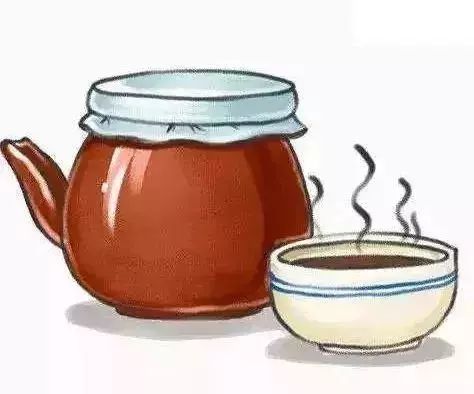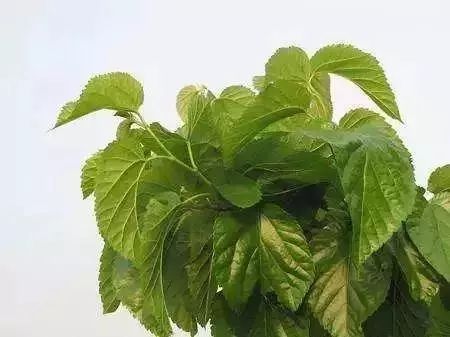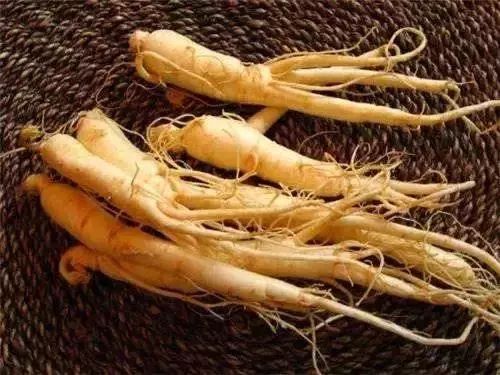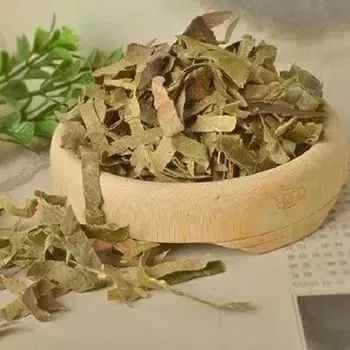If dryness and heat injure the lungs, leading to both Qi and Yin deficiency, which affects the lung’s functions of dispersing and descending, resulting in dry cough without phlegm, shortness of breath, and chest tightness, what decoction can be used for treatment?
Pneumonia, bronchial asthma, acute and chronic bronchitis, bronchiectasis, and lung cancer are all conditions associated with dryness and heat attacking the lungs, causing dry cough without phlegm, shortness of breath, and chest tightness. What decoction can be used for treatment?

Of course, it is a decoction related to lung rescue. The Qingzao Jiufei Decoction from Volume Four of “Yimen Falü” is precisely suitable for the above symptoms. (Public Account: Bencao Fang)
Three Qian of Sang Ye (Mulberry Leaf) (9g), Two Qian and Five Fen of Shi Gao (Gypsum) (8g), One Qian of Gan Cao (Licorice) (3g), Seven Fen of Ren Shen (Ginseng) (2g), One Qian of Hu Ma Ren (Sesame Seed) (3g), Eight Fen of A Jiao (Donkey-hide Gelatin) (3g), Seven Fen of Xing Ren (Apricot Kernel) (2g), One Qian of Mai Men Dong (Ophiopogon) (3g), Seven Fen of Xing Ren (Apricot Kernel) (2g), and One Qian of Pi Pa Ye (Loquat Leaf) (3g).
Modern usage: Decoction in water, taken frequently while hot.
This formula’s treatment focuses on clearing, dispersing, moistening the lungs, and nourishing Yin while benefiting Qi.

The formula heavily utilizes the light and cold nature of Sang Ye to gently clear lung dryness and disperse wind-heat, allowing pathogenic factors to exit, making it the monarch herb.
The pharmacological effects of Sang Ye have been confirmed through four years of experiments at Zhejiang University Clinical Pharmacology Research Institute, demonstrating that Sang Ye has similar tonic and anti-aging effects as Ren Shen. Ren Shen belongs to the category of warming tonics, while Sang Ye is a cooling tonic, with no restrictions, suitable for all ages and all seasons.
When warmth and dryness invade the lungs, warmth belongs to heat, thus it should be cleared. Excessive dryness leads to desiccation, thus it should be moistened. Therefore, Shi Gao, which is pungent, sweet, and cold, clears and drains lung heat. Mai Men Dong is sweet and cold, nourishing Yin and moistening the lungs. Although Shi Gao is heavy and cold, its dosage is lighter than that of Sang Ye, which does not hinder the light dispersing action of the monarch herb; Mai Men Dong, while nourishing and moistening, is also less than half the dosage of Sang Ye, thus it will not hinder the dispersing action of the monarch herb. The combination of monarch and minister herbs works together, with dispersing and clearing, and clearing and moistening, forming a commonly used combination for clearing and moistening the lungs.
Ren Shen benefits Qi and generates fluids, and together with Gan Cao, can tonify the spleen and nourish the lungs.

Hu Ma Ren (black sesame) and A Jiao, being black, tonify the kidneys and nourish Yin. “The kidneys are the root of Qi,” thus when the kidneys are strong, the lungs have strength during respiration. The lungs and kidneys are interconnected, and both are beneficial. These two herbs assist Mai Men Dong in nourishing Yin and moistening the lungs. When the lungs are nourished, their functions of dispersing and descending are restored, allowing them to continue working and regulating the body’s Qi mechanism. (Public Account: Bencao Fang)
Xing Ren and Pi Pa Ye bitterly descend lung Qi, stopping Qi reversal and cough.
All of the above are assistant herbs. Gan Cao can harmonize all herbs, serving as the envoy herb.
The entire formula employs the four methods of dispersing, clearing, moistening, and descending, simultaneously benefiting both Qi and Yin, dispersing without depleting Qi, clearing heat without harming the middle, and moistening without causing phlegm obstruction. It is a commonly used formula for treating severe cases of warmth and dryness injuring the lungs. Clinical application focuses on symptoms such as body heat, dry cough without phlegm, Qi reversal with wheezing, red tongue with little coating, and a weak, rapid pulse as key diagnostic points.
Of course, if encountering the following situations, adjustments can be made.
If there is much phlegm, add Chuan Bei and Gua Lou to moisten dryness and transform phlegm; if heat is severe, add Ling Yang Jiao and Shui Niu Jiao to clear heat and cool the blood.

This formula is called “Lung Rescue” due to the warming and cooling tonics of Ren Shen and Sang Ye. It is important to understand that when Qi is obstructed, causing shortness of breath and chest tightness, the lung Qi must be greatly deficient. Supplementing Qi is essential, and the sweet flavor of Ren Shen can indeed tonify Qi. When Qi is abundant, it becomes fire, thus the bitter flavor of Xing Ren helps to descend Qi, which in turn reduces fire, allowing the lung’s function of dispersing and descending Qi to be restored.
When Qi flows, there is no stagnation, and symptoms such as wheezing and nausea are eliminated. If this formula rigidly adheres to the idea of lung heat injuring the lungs and does not dare to use warming and Qi-moving herbs like Ren Shen, the condition will not only fail to improve but may also lead to further accumulation of lung fire due to obstructed lung Qi, with dire consequences. Thus, this formula is named “Lung Rescue,” indicating its cooling yet tonifying nature.

In Conclusion:
Many people believe that pneumonia can only be effectively treated with intravenous therapy in Western medicine, but from this formula, it can be seen that with proper combinations of Chinese medicine, eliminating pneumonia is not a difficult task. Traditional Chinese medicine is profound and extensive; the key lies in whether one can accurately diagnose and flexibly apply treatment.
Friendly Reminder: Everyone’s physical condition is different; the formulas provided in this article should be adjusted according to individual conditions, and it is recommended to seek guidance from a professional doctor. (Images sourced from the internet; please contact for removal if there is any infringement.)

